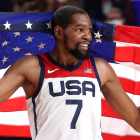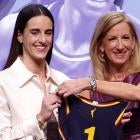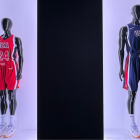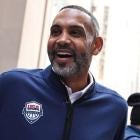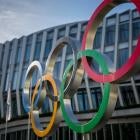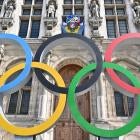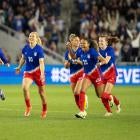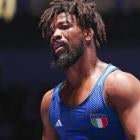We all see the photos after a big sporting event, but sometimes we forget that the photos were taken by actual human beings.
Ezra Shaw has been a staff photographer for Getty Images for nearly 18 years, and has captured some iconic images from the Olympic Games. Over the course of his career Shaw has won awards in the World Press Photo, NPPA Best of Photojournalism Awards, Pictures of the Year International and the Sony World Photography Awards.
Here he has shared six of his most memorable Olympic photos, along with details about how he was able to achieve each shot.
Beijing, 2008: Michael Phelps hugs his mother after winning his record eighth medal
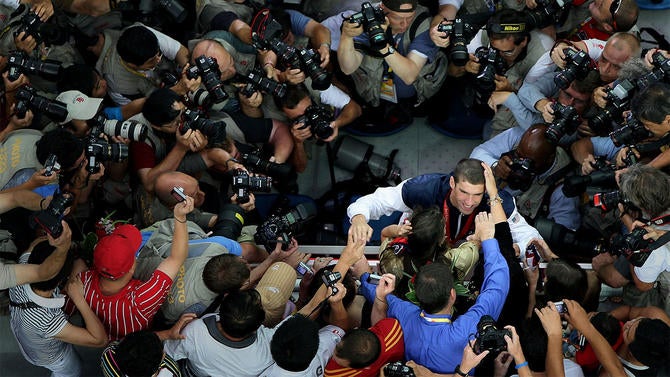
Shaw: My assignment for the day was to photograph the races from the catwalk above the pool. Most of the time I was at the end of the pool shooting the action with a long telephoto lens as we were only allowed one camera. I had been to many of Phelps' races already during the Olympics and I knew he always waved to his mother after his races after he won. I ran back to the other end of the catwalk where the rest of my cameras were to switch to a wider lens and positioned myself above his mother and sister. I had thought it would be a good opportunity to get a nice wide shot of him waving to his mother, but didn't expect him to walk through a sea of photographers to actually hug his mom. Being able to anticipate a moment and think about what is going to happen next is an important part of the job. Because of that preparation, I was ready to capture a really unique moment.
Beijing, 2008: Usain Bolt pulls away from the field en route to 100m gold
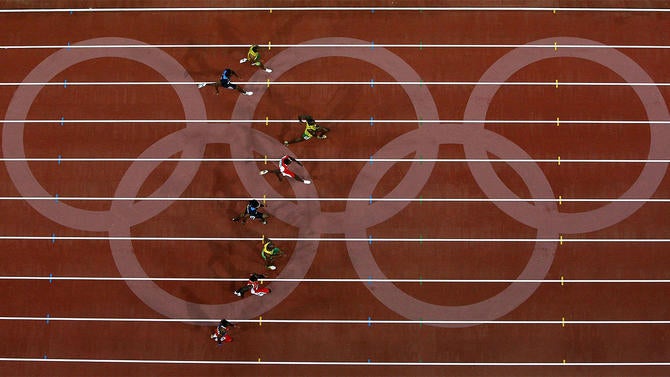
Shaw: This image was taken before we started using the camera technology we have today. Today we have robotic cameras that are controlled with video screens and joysticks to follow all the action, but back then I was physically hanging over the side of a catwalk over the track as the 100m final commenced. I had been assigned in this position for the opening ceremony, so I was familiar with the maze of steps, railings and small corridors to get up to the top of the Bird's Nest. The 100 meter final is always the marquee event at the track, and as Bolt led the field I remember leaning over a railing to position myself as centered over the top of him and the rings as possible, to take this shot.
Beijing, 2008: Fireworks explode during the closing ceremony
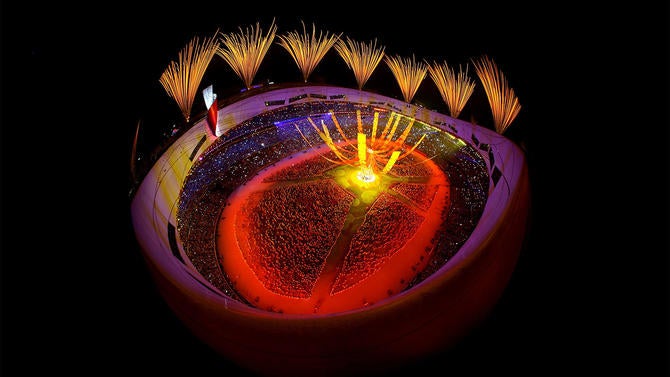
Shaw: For the opening ceremony in Beijing, I was positioned high above where the torch is lit. Because of all the fireworks going on, they made all of the photographers wear a full fire suit and helmet which we wore while waiting in position, long before anything even happened. To get to the catwalk, you had to take an elevator to the concourse of the stadium and then climb a number of ladders and galleys. It was a hot Beijing night and we didn't have water, so being up there created a really difficult situation and I found I didn't have the right angles and equipment to get the full stadium.
Thanks to spending time in the opening ceremony, I got a better feel for space and position in order to capture this image of the closing ceremony. I was able to go back and work on a picture that I visualized from the opening ceremony but hadn't been able to get at the time. I clamped the camera to the side of the catwalk and had it angled pointed right over the ceremony. You couldn't stand up when the fireworks were firing and every time they went off we had to duck down, but as I did, I pressed the trigger. This picture really portrays the size of the stadium and colors and transports the viewer to the excitement of the ceremony.
London, 2012: Marathon runners pass Big Ben and the Palace of Westminster
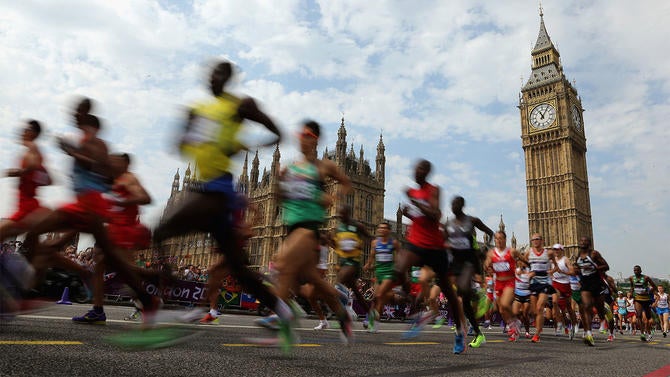
Shaw: Usually the marathon and triathlon at the Olympics are the best races to try to incorporate some local landmarks to place the event. With the 2012 marathon event running past some of London's most iconic landmarks, it was a nice opportunity to create an identity within the imagery. I slowed down the shutter speed to a 40th of a second, to give a sense of movement so the image wouldn't be stagnant, and laid down on the ground to shoot up at the runners. For my photography I try to incorporate as much of the surroundings as possible to share the atmosphere and to give the viewer as much a sense of being there as possible. There are always going to be great action shots, but sometimes it's important to bring the viewer into the moment.
Beijing, 2008: Russian synchronized divers Yulia Pakhalina and Anastasia Pozdniakova show perfect symmetry
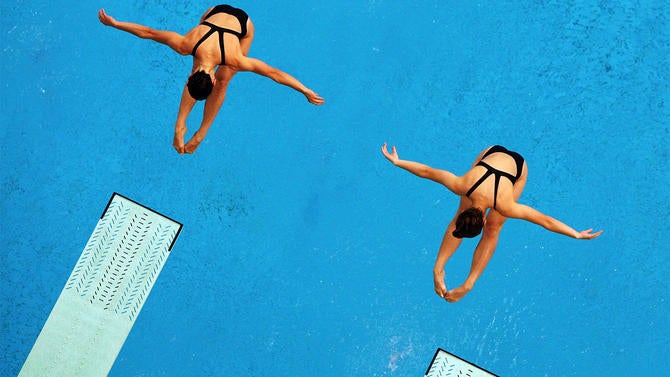
Shaw: I was up there all day shooting divers and even though they say the sport is synchronized, it's actually not always as coordinated as you think. However this is one image of where they are perfectly parallel, arms out, almost reaching for each other, both of them with their toes touching. I like the composition of this image; the lines and angles work together to highlight the divers' synchronicity. It's definitely difficult shooting divers when you're trying to compose a picture and focusing on coordinated movement all whilst leaning over a railing over the pool to capture a split-second moment. If I wasn't in that position for work, I probably wouldn't love hanging over the pool from a catwalk as I'm not that fond of heights.
London, 2012: Silver medal-winning gymnast Kazuhito Tanaka competes on the horizontal bar
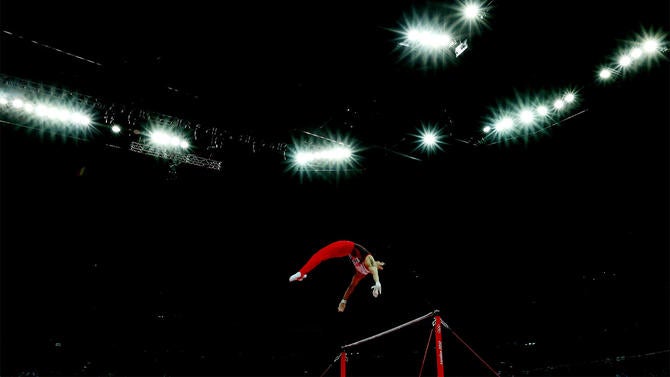
Shaw: Before gymnast Kazuhito Tanaka started his routine, I visualized this picture in my mind. There's a way to set your lens, by closing your aperture down, to turn the lights into stars but I also had to make other technical adjustments to get the picture that I wanted. I was lucky that Tanaka was also wearing red so he didn't disappear against the backdrop, and that his body was completely rounded as he was coming off the high bar. If you're able to spend a little bit of time framing an image and thinking about how to capture a distinctive image, you should plan for that. Getty Images really encourages photographers to think about creating unique images; ones that not only set us apart but also tell a different story.













